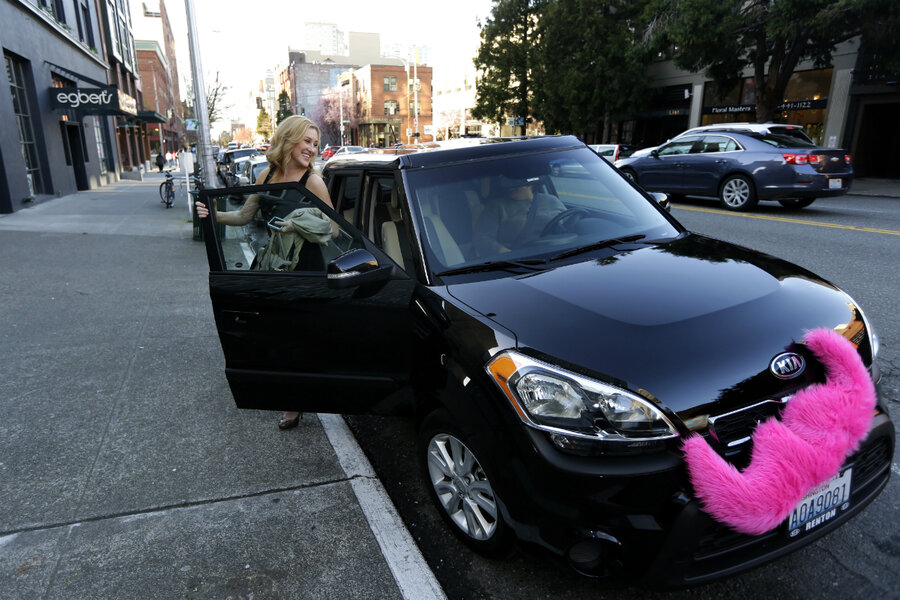Ride-hailing apps boost women economically but safety concerns persist
Loading...
| Seattle
Women in emerging markets could benefit from jobs in the booming ride-hailing industry, but cultural attitudes in some places are an obstacle, the International Finance Corporation (IFC) said.
In a report the IFC, which is part of the World Bank group, said apps should be better designed to take safety into account, with female drivers suggesting panic buttons and hotlines with guaranteed response times in the event of attack.
Ride-hailing has boomed in recent years, with 18 percent of the global population using one of the services in the past year, the IFC said.
"As these models grow very rapidly in emerging markets, we want to ensure that women are not left behind," the IFC's gender lead, Henriette Kolb, told the Thomson Reuters Foundation.
"We need to make an extra effort in designing for and with women."
IFC and Accenture, a professional services firm, surveyed 11,000 drivers and passengers of both sexes in six countries using data from Uber, a global ride-hailing firm based in the United States.
Other such firms include Lyft in the United States, China's Didi Chuxing, India's Ola Cabs, and GrabTaxi in southeast Asia.
"We wanted to open the door to this research to better understand how ridesharing has served women around the world and how we can do better," said Uber spokeswoman Brooke Anderson.
"Our hope is that everyone in the ridesharing industry can benefit from this research," she said, adding that the company was taking a close look at the report's recommendations.
The traditional taxi industry is male-dominated, the report noted: 98 percent of taxi-drivers in London are men, for instance, and typically take two years to know the city's streets well enough to pass the formal exam.
By contrast, ride-hailing has a far lower barrier to entry. Drivers screened by companies like Uber can start driving in days, Ms. Kolb said.
Uber's women drivers see a higher boost to their income than men do, Kolb said, because most women join Uber when unemployed, working part-time, or in low-wage work, whereas men typically come from work that was better paid in the first place.
However, Kolb said the driving-for-hire industry could not solve the gender wage gap.
"We don't propagate ride-hailing in any way, shape, or form as an end-all, be-all solution to improving women's participation in the labor force," she said.
Of all women passengers surveyed, 40 percent would prefer the option to select a woman driver when traveling at night, or in a new city.
Uber does not offer that, but Kenyan ride-hail app Little does, and women-only taxi services are available in Karachi, Pakistan; London; Mexico City; New York; Paris; and some Australian cities.
"There's a very strong business case to increase the participation of women as drivers," Kolb said.
In 2015, Uber announced a plan to hire 1 million women drivers globally. The company reached that goal in July 2017, Ms. Anderson said, although most hires were in Canada and the US.
In some countries, including Egypt and Indonesia, most men are opposed to their female relatives working as drivers, said the report, the first on women in the ride-hailing industry to use company data.
"In many countries around the world, women are still not meant to be on the road and face huge amounts of sexual harassment on all forms of transport," Kolb said.
This story was reported by Reuters.







